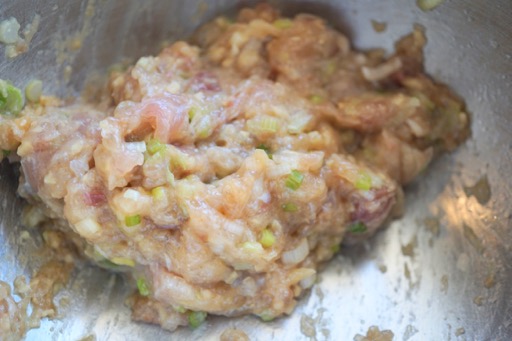Shime-saba しめ鯖 is vinegar pickled mackerel and a very popular item in Japan. The best is fresh local “branded” mackerel (such as “Seki-saba” 関鯖) prepared in-house but, nowadays, the risk of Anisakis is rising possibly due to warming of the sea water. (The fresher the mackerel the higher the Anisakis’ risk. In addition, curing the fish in salt and vinegar does not kill the Anisakis but freezing does). We can easily get shime-saba in the U.S. packaged and frozen. Although there are so many varieties of mackerel, most frozen packages coming from Japan to the U.S. use mackerel from Norway as I understand it. I have posted molded sushi made of shime saba which is called “baterra” バッテラ or “oshizushi” 押し寿司. This type of sushi is famous in the Kansai region 関西. In that post, I said that the classic preparation requires a thinly shaven sheet of kelp called “Shiroita konbu” 白板昆布 placed on top of the fillet of fish. Such a preparation is next to impossible to get here in US. Some days ago, however, I found a package of frozen mackerel with a sheet of kelp already on it in Tako Grill’s frozen case and got it. This must be a new product which became available recently since I saw the identical item at the Japanese grocery store as well as at Catalina Offshore products.
Instead of using a mold to shape the sushi, I made it freehand which is called “Bou-zushi” 棒鮨 (“bou” means a rod or stick). The picture below shows the “saba-no-bouzushi” 鯖の棒鮨 I served as the ending shime dish one evening. As you can see, the surface of the fish is covered with a layer of thinly shaven kelp.
Ingredients:
One package of frozen vinegar cured mackerel as described above, thawed, tail portion cut and tucked in to make an even width.
Sushi rice (my wife made fresh rice for this).
Directions:
Instead of using oshizushi mold, I formed a log of the sushi rice about the same length and width as the mackerel by hand (you need to wet your hand).
Using a silicon sushi rolling mat (relatively recent acquisition, you could use a regular bamboo mat covered with plastic wrap or wet tea towel), place the mackerel skin or kelp side down.
Place the log of the rice onto the mackerel.
Press the rice lightly against the mackerel and roll the silicon mat (top image in the picture below)
Tighten the mat and also press on both sides of the rice to make the rice and the mackerel form a slightly flattened cylinder and unroll (bottom image in the picture below).
This was a very satisfying dish. The layer of mackerel was very thick, but very tender and well seasoned. My wife really like this and said the ratio of sushi rice to fish was perfect. With the addition of kelp layer, it is authentic and tastes better (I think). Since I did not have to find and soak the mold ahead of time, this method was a bit easier to make.
















































